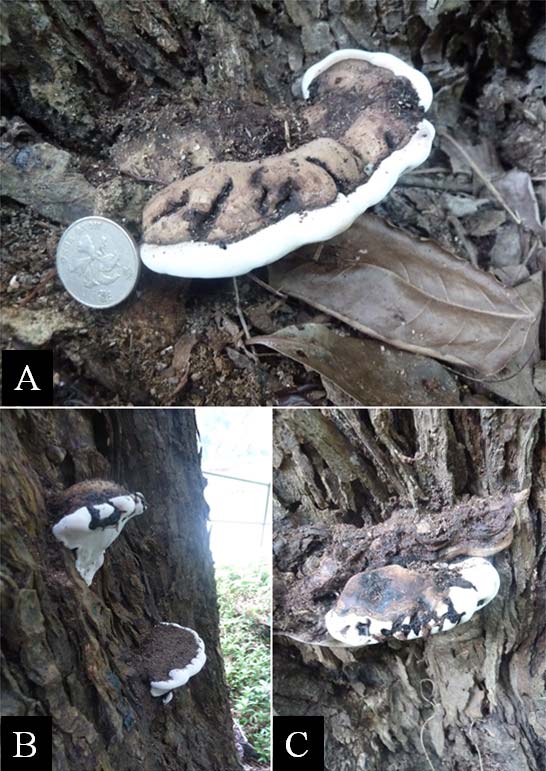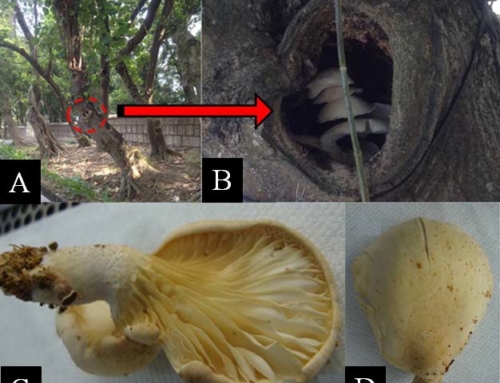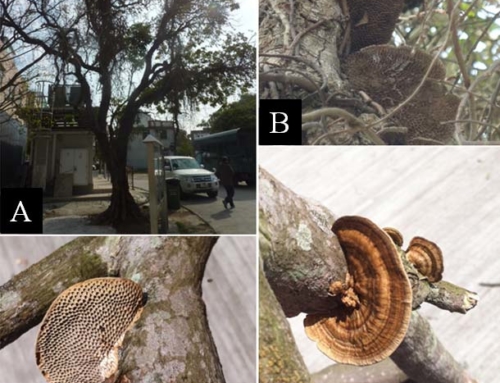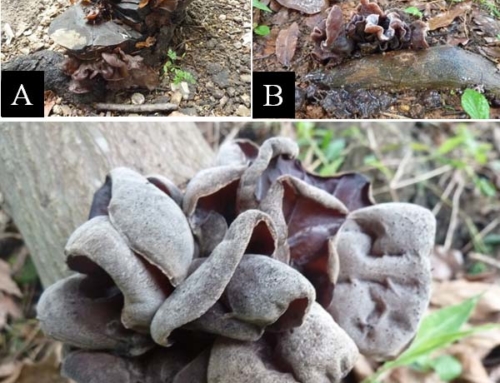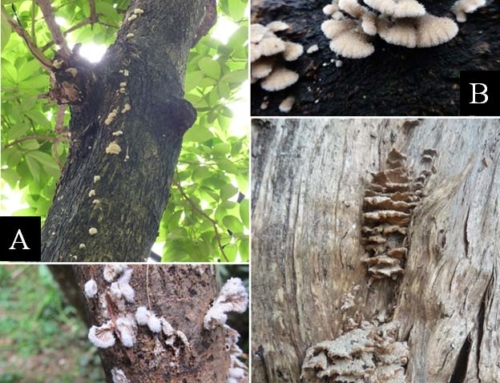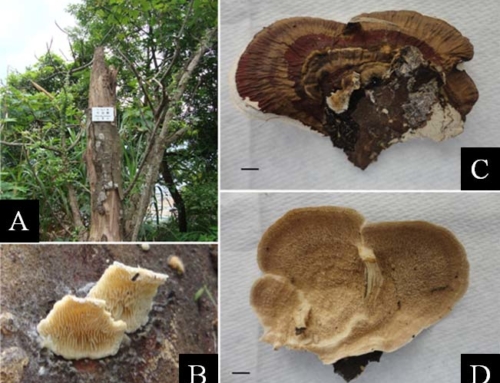Fruiting Body
Fruiting bodies perennial, 10-20 cm × 5-15 cm and 1.5-12 cm thick; pilei broadly rounded, hoof-shaped or irregularly shaped bracket, flat and
directly attached to the substrate in clusters and tiers, cork-like to woody, grey turning into brown, upper surface forming an uneven crust, with ridges and concentrated furrows, covered by a thick chocolate brown to copper coloured layer of spore powder up to 1 mm thick, fresh fruiting bodies with white margin and slightly rounded, stalkless; pore surface white but becoming brown when damaged or with age, pores 4-5 per mm; spores 7.5-10 μm × 4.5-6.4 μm, oval, brown or yellowish brown.
Distribution and Host Range
This fungus has a worldwide distribution and locally it could be found on broadleaved trees such as Acacia confusa, Ficus microcarpa, Hibiscus
tiliaceus and Sapium sebiferum. Occasionally found on coniferous trees.
Signs and Symptoms
This fungus is mainly associated with roots and root collar of tree trunks, particularly on trees with obvious open wound and/or root damages. Trees with early stage of fungal infection by this fungus may experience stunted growth and non-specific symptoms on the crown such as
defoliation and abnormal leave size and colour. As the infection advances over time, crown symptoms may get worsen and accompanied by bark
loosening at the infection zone. Perennial fruiting bodies are often observed at the advanced stage of infection during which the fungus may have already been well-established by spreading vertically and radially along the trunk.
Pathology
This white rot fungus is known for its capacity in impacting the health and structural stability of trees in the urban environment. Some experts view
it as a predominantly saprotrophic fungus with the ability to degrade deadwood while others consider it as a pathogenic wood decay fungus with strong virulence owning largely to its association with extensive internal decay. Nevertheless, the ability of this fungus in colonising the heartwood
and sapwood of trees substantiates the pathogenic nature of this fungus.
Management and Control
Risk category: Moderate (ORANGE) Since this fungus could adversely affect tree health and structural stability, infected trees should be put under regular monitoring. As the disease may be disseminated through basidiospores, fruiting bodies observed should be removed to minimise the risk of building up of fungal inoculum in the infected trees. To reduce the chance of fungal infection, trees should be properly maintained and avoided from injury through pruning with large pruning wounds and/or large area mechanical damages. Fungicides may still be used as an interim measure for trees exhibiting early or advanced stage of infection, though the treatment may not be effective to hamper the onset of the disease. At the advanced stage of infection in which the structural integrity of the trees is undermined and could not be mitigated through installation of props and wires, removal of structural limbs and/or whole tree should be considered.
Citation: Note on Common Wood Decay Fungi on Urban Trees of Hong Kong

